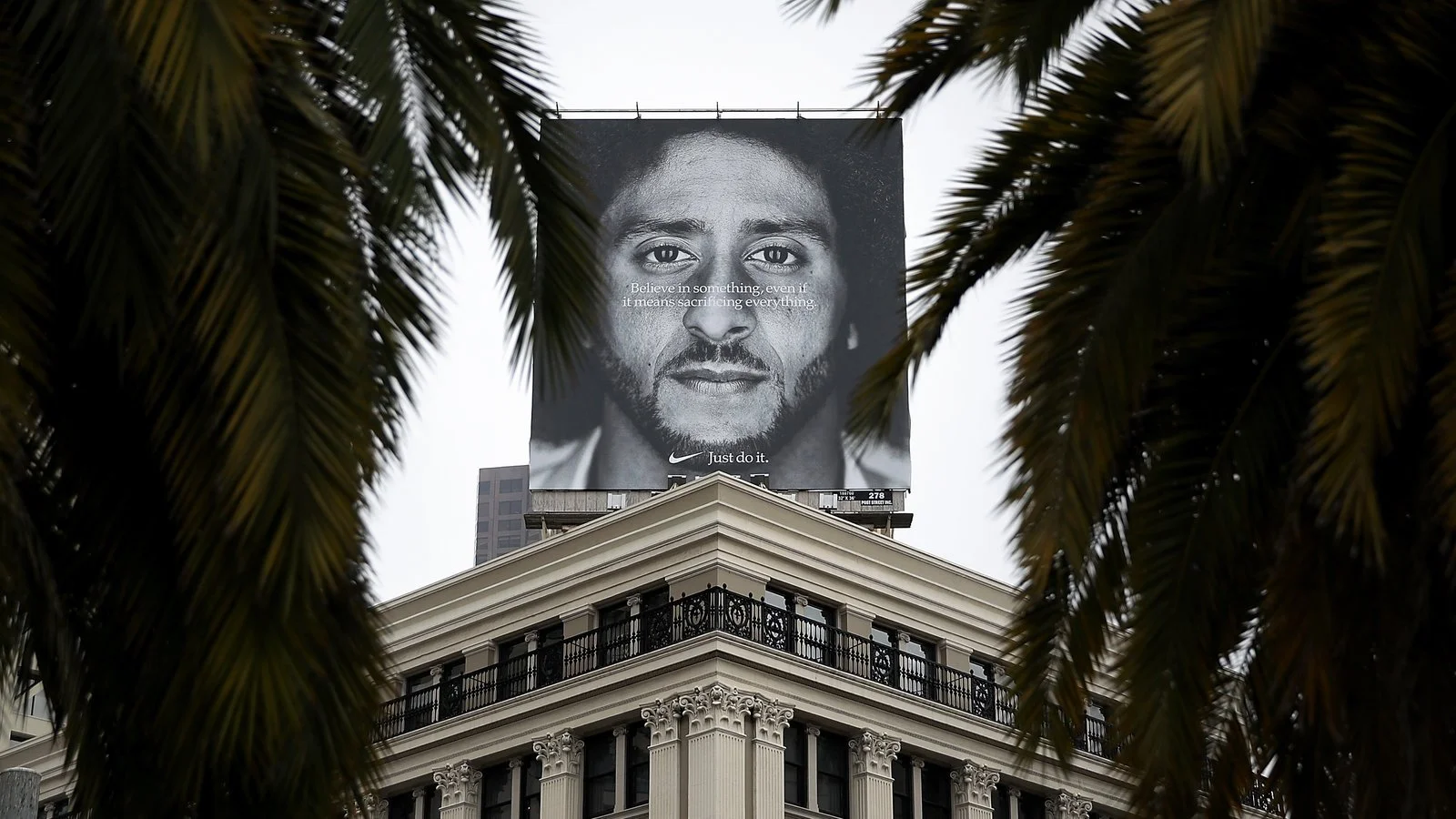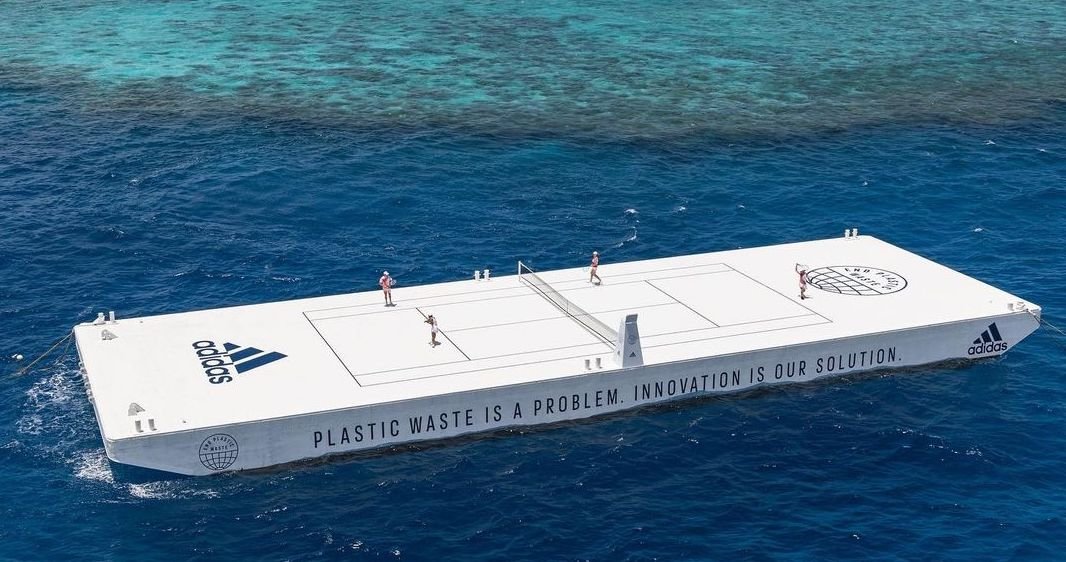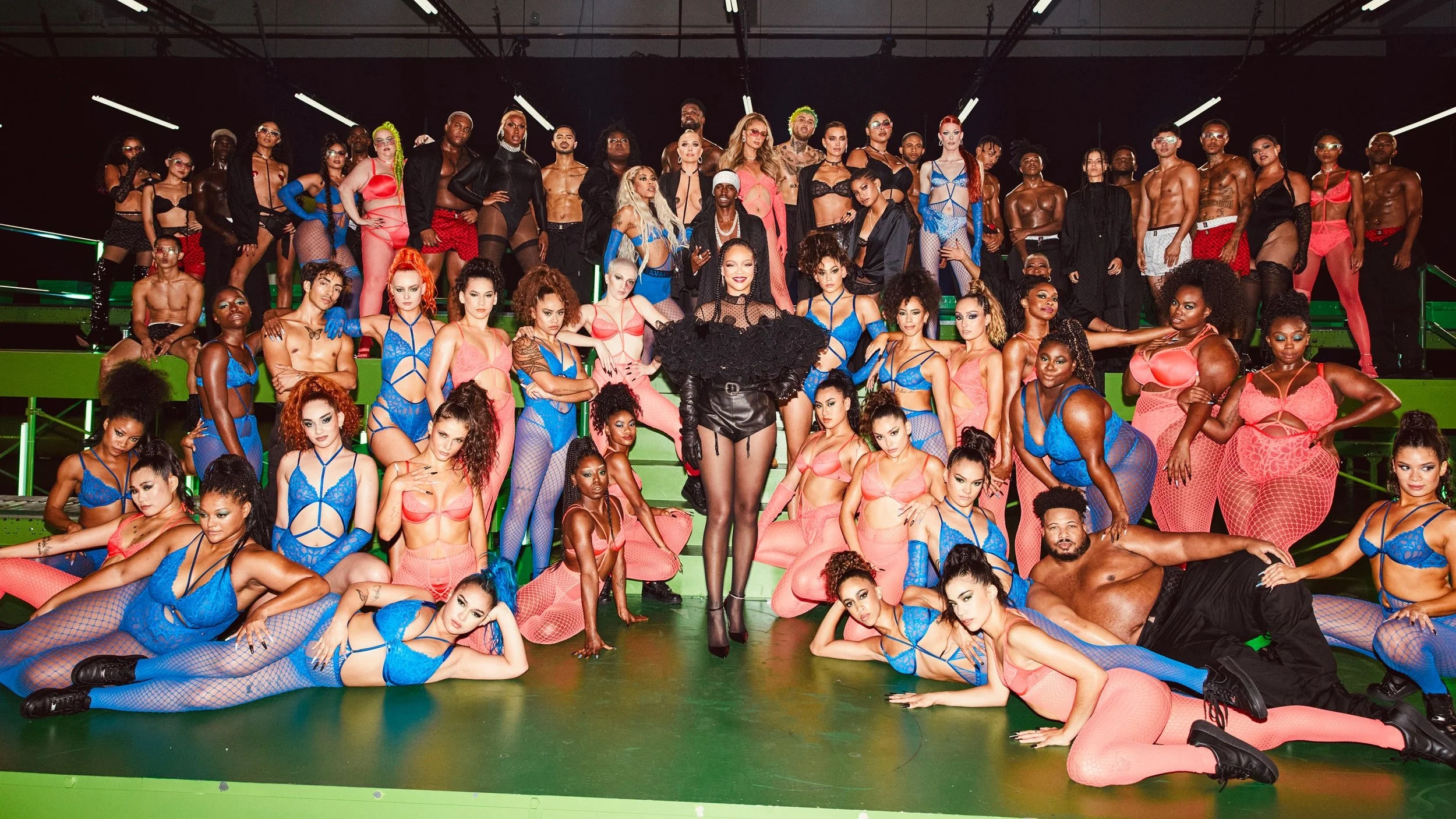sustainability and inclusivity in modern marketing
In today’s progressive climate, defining sustainable and inclusive marketing doesn’t take a lot of effort. Yet unfortunately, implementing sustainable and inclusive strategies that are an authentic representation of a brand’s values is an area requiring incredible improvement. While some brands are renowned for changing the game when it comes to progressive, sustainable approaches (think anything Fenty, which we’ll get to in a moment), most consumers are shocked to learn that the globe’s largest brands are often the most hypocritical.
Nike x Colin Kaepernick ‘Dream Crazy’: “Believe in something, even if it means sacrificing everything” billboard
Arguably one of the most controversial campaigns in recent years, 2018 saw Nike team up with former NFL player Colin Kaepernick in a campaign that earned the brand a Creative Arts Emmy. ‘Dream Crazy’ also included the American women’s soccer team, LeBron James and Serena Williams- so why the controversy with Kaepernick alone? San Francisco 49ers quarterback Colin Kaepernick made worldwide headlines in 2016 for taking the knee during the American national anthem at NFL games, a peaceful protest of the anthem’s incongruence with America’s rich history of racial injustice and police brutality. As such, Kaepernick became a prominent figure in the Black Lives Matter movement, and in true American fashion, was fired from the San Francisco 49ers and completely blackballed by the NFL altogether.
Moving back to Nike, the campaign was undoubtedly a success; Nike saw a 5% increase in shares in the weeks following the campaign, and most importantly conveyed a powerful message that blurred the boundaries between politics, sports and social justice. There’s just one issue: Nike forgot to include a pretty important detail regarding their financial history. The brand’s political spending in 2018 (yes, the same year the campaign aired) was overwhelmingly in favour of the Republican party, that is, the party with notable disapproval and some would argue- hatred- of the Black Lives Matter movement. Nike’s billionaire founder Phil Knight even made it known by dedicating record funds from his own pocket to Oregon’s Republican candidate at the time.
Consumers and critics alike have aligned the campaign with the multitude of brands that publicly support social justice causes across social media, only for their political funding to say otherwise behind closed doors. An article published by Forbes in 2019 observed that nine of America’s largest (seemingly) LGBTQ-supportive brands donated around and above $1 million to homophobic politicians in the preceding electoral cycle.
Adidas x Parley for the Oceans’ Great Barrier Reef Activation
Moving from social issues to sustainability, Adidas’ recent activation at the Great Barrier Reef was met with a wave of criticism that accused the brand of ‘green-washing’. Part of their ongoing ‘End Plastic Waste’ pledge, the brand joined forces with environmental organisation Parley for the Oceans, upcycling a barge into a floating tennis court before launching it atop of Queensland’s Great Barrier Reef. The court saw Australian athletes and influencers including Penrith Panthers’ Nathan Cleary and Olympic swimmer Ian Thorpe play tennis in Adidas’ latest tennis range made from Parely Ocean Plastic. The initiative sought to propose innovation as a solution to the ocean’s plastic pollution problem, and raise awareness of the impacts of climate change upon our beloved reef.
While some were drawn it’s creativity and appreciated the demonstration of innovation that aligned with the activation’s purpose, others were asking the bigger question; where did the stray balls go? Cue the fatal flaw. Adidas confirmed that Queensland surf life savers were on standby on jetskis to rescue any tennis balls that went astray, that is, the activation required pumping fossil fuels into the Great Barrier Reef while pledging to reduce the amount of waste (including fossil fuels) damaging the Great Barrier Reef.
So how can we do better? Why is there always a flip-side to seemingly authentic sustainable, progressive campaigns? Enter Rihanna and Patagonia (interesting mix, we know).
Rihanna’s Savage X Fenty, Fenty Skin and Fenty Beauty have taken beauty and fashion markets by storm. What started as a foundation shade range so inclusive it dominated mainstream media has since evolved into a lingerie brand designed for all sizes and genders. Fenty Beauty, Fenty Skin and Savage X Fenty are brands boasting cruelty-free, vegan and recyclable products that have seen virtually any race and gender grace their promotional assets. Most recently, Savage X Fenty’s new brick-and-mortar stores have been praised for their fit-outs featuring realistic, inclusive mannequins.
Savage X Fenty’s 2021 Vol. 2 Fashion Show
Similarly, Patagonia’s transparency regarding where they source their materials, how their products are manufactured and how they support their workers has aided its status as the world’s leading outdoor clothing brand. Moreover, the company took things into their own hands in 2016 and completely re-wrote the rule book for Black Friday to parallel their rejection of unsustainable fast fashion. Rather than reducing their prices to boost sales and revenue in traditional Black-Friday-capitalist fashion, Patagonia instead donated 100% of their profits to environmental organisations. The brand expected to collect between $2 million and $4 million in donations over the course of the campaign, and instead generated a whopping $10 million.
Big brand controversies, Black Friday campaigns and inclusive lingerie aside, its obvious brands with genuine corporate social responsibility are obtaining and maintaining long-term consumer loyalty. But, finally, let’s dig deeper. The environmental, social and governance (ESG) agenda is the secret to brand health in 2022, as explained by Bloomberg’s CMO Anne Kawalerski below.
have your say!
Whether it’s your fave example of a progressive campaign, a critique of a brand’s approach to sustainability or even a take away from this blog post, get involved in the conversation with Only Everything!
Head to our Instagram, Facebook or Linkedin below.



